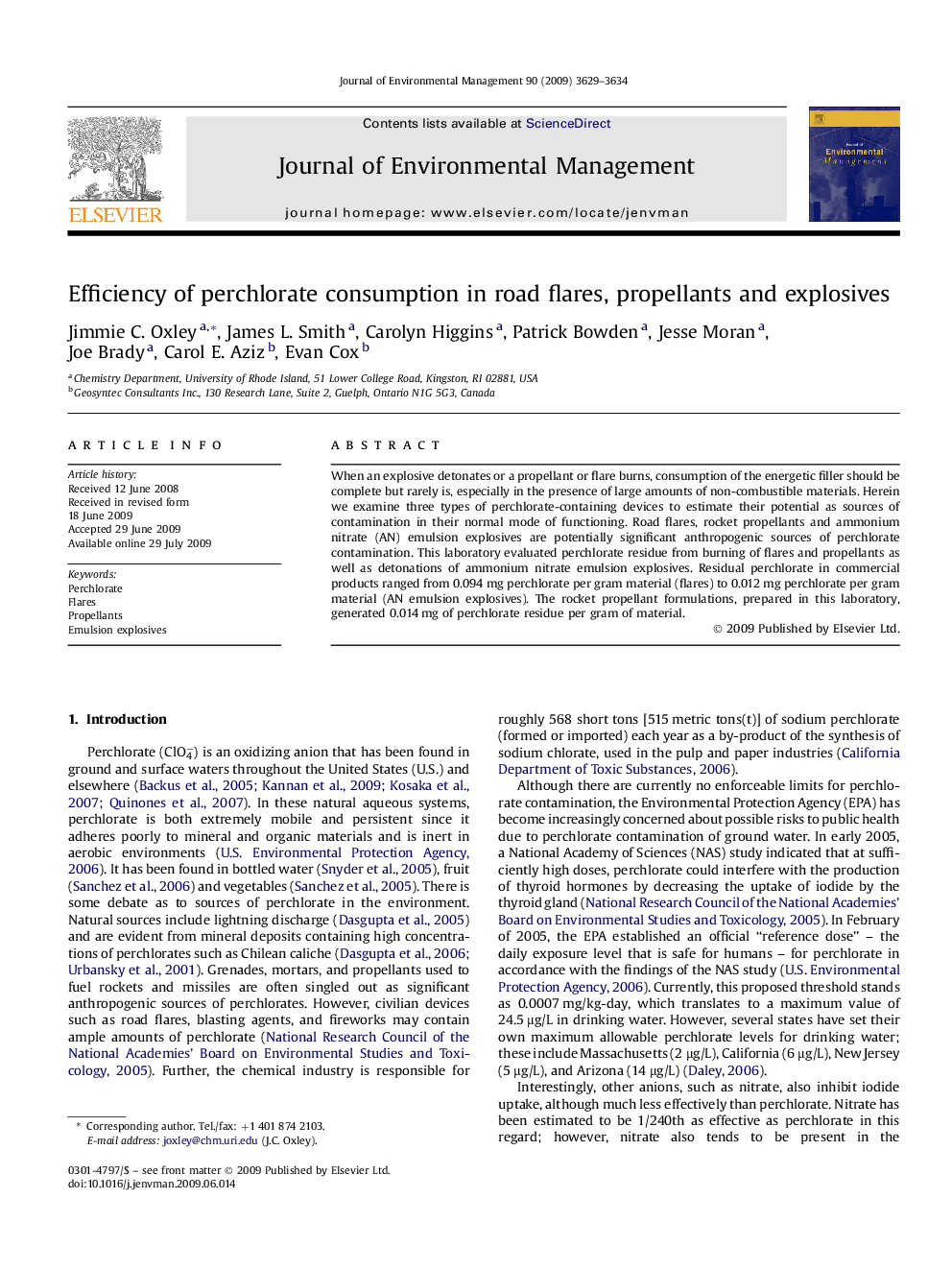| Article ID | Journal | Published Year | Pages | File Type |
|---|---|---|---|---|
| 1058059 | Journal of Environmental Management | 2009 | 6 Pages |
When an explosive detonates or a propellant or flare burns, consumption of the energetic filler should be complete but rarely is, especially in the presence of large amounts of non-combustible materials. Herein we examine three types of perchlorate-containing devices to estimate their potential as sources of contamination in their normal mode of functioning. Road flares, rocket propellants and ammonium nitrate (AN) emulsion explosives are potentially significant anthropogenic sources of perchlorate contamination. This laboratory evaluated perchlorate residue from burning of flares and propellants as well as detonations of ammonium nitrate emulsion explosives. Residual perchlorate in commercial products ranged from 0.094 mg perchlorate per gram material (flares) to 0.012 mg perchlorate per gram material (AN emulsion explosives). The rocket propellant formulations, prepared in this laboratory, generated 0.014 mg of perchlorate residue per gram of material.
